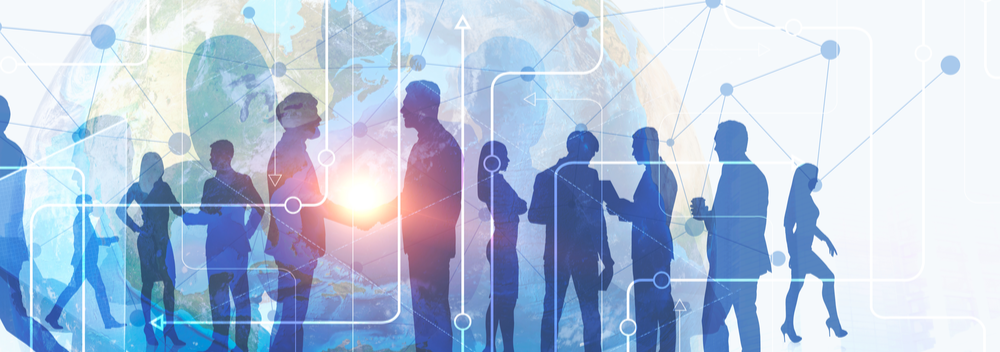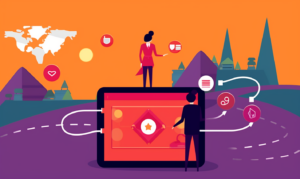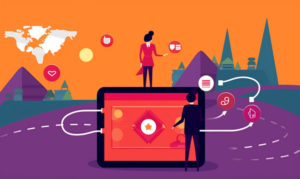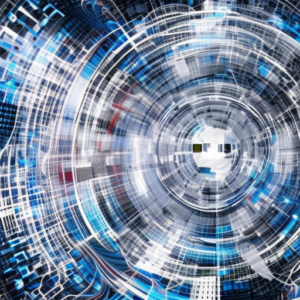How Technology Is Transforming HR
- 5 Min Read
When discussing automation, we often talk about a dystopian future where humans are rendered useless by machines. While it’s clear that technology will have a huge impact on the future of work, this view ignores three important facts…
- Author: Mark Williams
- Date published: Aug 5, 2019
- Categories

From chatbots to augmented reality, technology is undoubtedly having a massive impact on our daily lives, and on the role of the HR professional. Mark Williams, Senior Vice President of Product, People First take a look out how technology will truly change HR, and is keen to bust a few myths along the way.
First, the process of automation is already here and has been for over a century. The way we work is constantly changing in line with technological advancements.
Second, in most cases, machines tend to automate specific tasks, not entire jobs. Rather than being replaced, we are more likely to be augmented by technology, allowing us to work more efficiently than ever before.
Third, given that machines generally automate those tasks that are repetitive and ‘mindless’ – i.e. the ones we tend to dislike doing – the process of automation can free us from drudgery, allowing us to spend more time doing work that we enjoy.
This is certainly the case in HR, where a host of exciting new technologies have the potential to transform the way the HR function operates – as well as the employee experience. Here are three examples.
Chatbots
The role of the HR function is to look after the business’s most important asset – its people. This is a wide-ranging process covering everything from onboarding and training to employee engagement.
Traditionally, however, a huge proportion of HR’s resources have been spent fielding a constant stream of employee questions and requests. Given that most employees tend to ask the same type of questions again and again – about pay, about time off, etc. – this a hugely inefficient approach.
Chatbots solve this problem by automating these repetitive interactions with employees, providing a single point of reference for all their work-related queries.
As a result, HR staff are liberated from the administrative burden, allowing them to focus their energies on more strategic, high-value work – improving the employee experience and boosting engagement, for example. Their approach shifts from being reactive to being proactive.
This is great news for the employee, too. Instead of having to wait days for a response from an overloaded HR department, they get instant answers to their questions. What’s more, thanks to mobile technology, they can access the information they need anywhere, anytime.
Beyond employee requests, chatbots also have the potential to revolutionise the way HR approaches recruitment, providing a friendly, interactive interface between applicants and the organisation.
Recruitment chatbots can help gather candidate information via a simple back-and-forth conversation, answer job-related questions, keep candidates updated throughout the application process, and even help to schedule interviews. Again, this frees up HR staff from the constant flow of candidate requests, while revolutionising the candidate experience.
Augmented reality (AR)
As the name suggests, AR augments our experience of reality by superimposing virtual features over it. Unlike virtual reality (VR), which immerses the user in a completely fabricated world, AR provides a seamless blend between the real and the virtual.
Wearing an AR headset, the user can experience an enhanced version of their surroundings, complete with computer-generated information or animation.
In the world of work, AR could be used to transform the way employees interact with the workplace. Take on-boarding, for example. For most new starters, this process can be a tedious, if necessary, affair. But with AR, it could become something truly engaging and exciting.
Imagine taking an AR tour of your new workplace, where key information about people, places, and the organisation itself pops up as you move from place to place. Or how about going to an AR-enhanced training session, where relevant material and objects appear in front of your eyes? Sounds better than the traditional slide deck or flipchart.
People analytics
The last few years have seen a boom in analytics, with businesses leveraging the power of data to make smarter, more informed decisions. In the coming years, we can expect to see a shift in focus towards people analytics, as businesses attempt to fix the ongoing employee engagement crisis.
In addition to spotting wider organisational trends, people analytics can be used to understand individual employees and what makes them tick.
Our happiness at work is the result of the interplay between many factors – the type of work we do, the environment we work in, the people we work with, and so on. These factors are different for everyone. To truly boost engagement, businesses need to understand their workforce at an individual level.
People analytics allows HR to take a more holistic, personalised approach to engagement, considering not only productivity and performance, but also physical and mental wellbeing, mood, and surroundings.
A more human approach to HR
These examples show the power of technology to enhance and improve our experience of work. They also show that despite the scaremongering about automation, technology can make the workplace more human, not less.
By embracing the technologies above, HR will be able to ride the coming technological wave and deliver the modern work experience that employees now expect.









